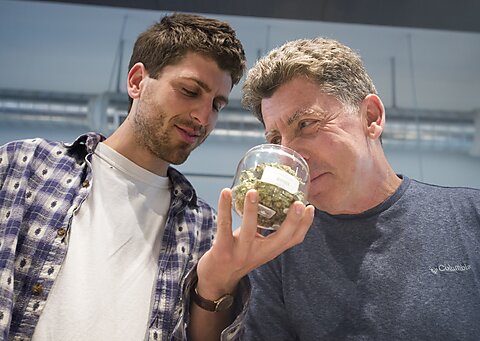In November 2020, voters in Oregon approved Measure 110, which effectively decriminalized the possession of federally illicit drugs by reclassifying possession from a Class A misdemeanor to a Class E violation, resulting in a $100 fine or an agreement to undergo a health assessment. Making or selling illicit drugs remains prohibited. The measure also called for expanding drug rehab and harm reduction services funded by marijuana tax revenues.
The law went into effect during the pandemic year of 2021—a year in which pandemic policies impeded harm reduction efforts across the country and a time that saw national drug overdose deaths reach a record high of 108,000, abetted by feelings of despair and isolation accompanying those policies. While this reform is still a baby in its bassinet, a coalition of Oregon business and political leaders plan to put a ballot measure before voters that would essentially strangle it.
The group called the “Coalition to Fix Ballot Measure 110” has unveiled two versions of its drug re‐criminalization proposal. One version again makes it a misdemeanor to possess heroin, fentanyl, cocaine, methamphetamine, and other illicit drugs. It also makes consuming illegal drugs in certain public places a misdemeanor. A second version increases penalties for delivering or transferring drugs, expands the definition of “delivery” to include “possession with the intent to transfer,” and increases penalties for subsequent arrests.
Both versions require mandatory treatment for people deemed “drug dependent.” Coercive treatment, aside from being an immoral violation of a person’s autonomy and agency, has also been found to be, at best, ineffective and, at worst, very harmful.
Harvard researchers recently reported that medication‐assisted treatment with either methadone or buprenorphine is the only treatment strategy associated with “reductions in overdose and serious opioid‐related acute care use compared with other treatments,” including inpatient detoxification or residential services.
Opponents of Measure 110 cite Oregon’s continued rise in overdose deaths, the growing homeless population, and the increase in public drug use to justify a return to failed prohibitionist solutions.
However, the “Coalition to Fix Measure 110” was mistaken if they believed that drug decriminalization would necessarily lead to a drop in illicit drug use—especially in the peak and post‐peak years of the coronavirus pandemic. The primary goal of Measure 110 was to reduce drug overdose deaths by redirecting resources from incarceration to harm reduction. Alas, the pandemic got in the way.
Reverting to incarceration will do nothing to deter illicit drug use. It will just crowd the jails, prisons, and courts, add to the workload of law enforcement, and increase the burden on taxpayers. This approach didn’t deter drug use before Measure 110, so why should it if Measure 110 is effectively repealed? Also, evidence reported in the March 2023 issue of the American Journal of Public Health suggests that when law enforcement doubles down on drug seizures, it may directly increase overdose deaths. This is presumably because, after a drug bust, users must seek new and often unfamiliar sources for their drugs, many of whom provide drugs with different dosages and purity.
Max Williams, a former Republican Oregon state legislator, is a member of the group seeking to put the re‐criminalization measures on the November ballot. To his credit, he doesn’t blame Measure 110 for Portland’s homelessness crisis, according to The Oregonian, the state’s largest newspaper. The causes of homelessness are complex and multifactorial. In a recent Cato briefing paper, Vanessa Brown Calder and Jordon Gygi discuss how land use and zoning regulations make housing less affordable and create barriers to housing development that increase housing supply.
Opponents of Measure 110 are understandably upset when they view drug use in plain sight, which their children can witness. One way to reduce open‐air drug use is by bringing it inside, out of the public eye, and into overdose prevention centers (OPCs). A federal law, 21 U.S.C. Section 856 (the so‐called “crack house statute”), makes OPCs illegal in this country, but two of them have been working in New York City, sanctioned by the city government since the end of 2021. They announced this July that they had reversed more than 1,000 overdoses since they began operating.
Another way to address the problem of loitering and gathering in ways that provide a public nuisance is by enacting and enforcing public nuisance laws. When a group of people are intoxicated with a legal drug like alcohol and vomiting on public streets, are rowdy, and litter the street with bottles, it is legitimate to call some enforcement authority (preferably an unarmed and separate division of the police department) to combat it—not with jail time, but with some sort of fine or sanction.
The same principle should apply to people who use other drugs. In some cases, the law can require them to relocate to areas of the city where they are less likely to disturb other residents.
This November, Oregonians will likely be asked to “fix” Measure 110 with “remedies” that have failed for more than 50 years and will only worsen the harms caused by drug prohibition.

